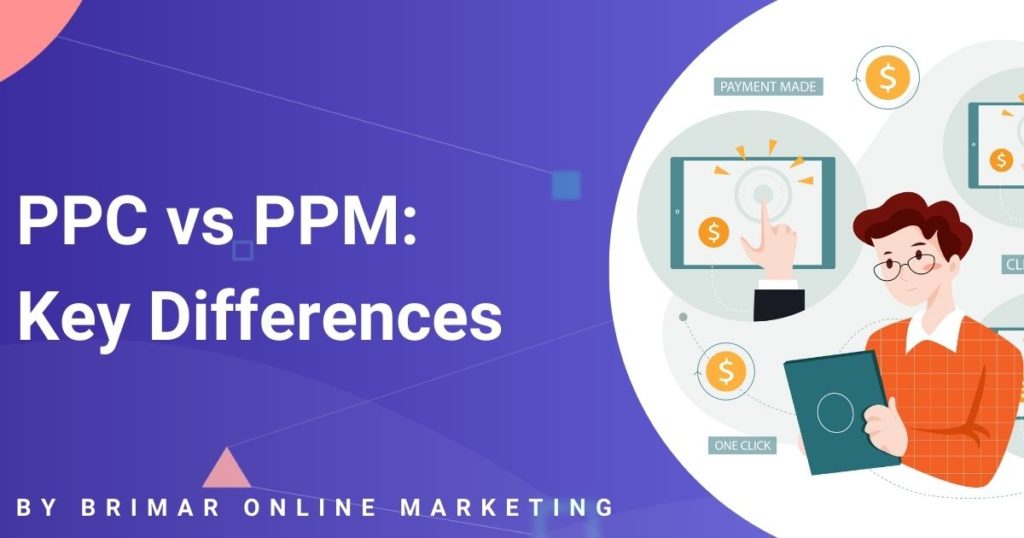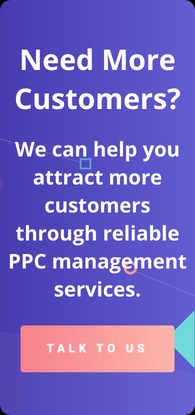
After visiting many sites on the web, you start to realize how often advertising appears.
As a company, many times you require services to advertise like PPM or PPC.
So it makes sense to find out which is better, facing the benefits of PPC vs PPM campaigns.
Let’s take a quick glimpse of what is both to help you choose.
What is PPC?
PPC stands for Pay-Per-Click Ads.
It means that you get charged when one of your ads gets a click.
Sometimes, this kind of marketing approach works best in terms of making the most of your budget.
So you can make sure your ad’s bidding price is going to get you high revenue.
To really take advantage of this marketing tool, it is important to be aware of the keywords to use.
And not only that, you must pay attention to the time of the advertisement to appear.
Paying attention to the geographic location to show your ads is essential.
Due to the research that must be done to successfully use Pay Per Click, companies prefer to hire digital agencies.
Start Attracting Customers Through PPC Advertising Today!
We can help you create PPC campaigns that attract customers. Our services include bid management, keyword management, landing page performance reviews, and more.
What is PPM?
PPM stands for Pay-Per-Impression Ads.
It works similarly to the PPC approach with the exception you are not charged when someone clicks your ad.
Instead, you are charged when your ad appears.
To be exact, after your ad appears 1000 times you pay an amount of money.
Regardless of how inaccurate this mode may look, it is cheaper than the PPC model.
So if you compare it from the money spent perspective, PPC vs PPM wins the last one.
Now in terms of accuracy, PPM has a range of effectiveness of about 2%.
This means that from every 1000 views you are getting near 20 clicks.
The PPM ad’s accuracy may vary depending on the quality of the ad campaign obviously, but its effectiveness remains.
PPC vs PPM: Key Differences
Let’s highlight a few differences between PPC vs PPM:
1. The Payment Method
Both methods defer on the way they charge money for the service.
First, we have PPC, in this approach, you will only pay for every time your ad gets a click.
So If you bid (for example) 1$ for each click you will pay 10 dollars for 10 clicks.
As simple as it can be.
On the other hand, you have PPM.
On this approach, you will pay for 1000 views before they get on the web.
Regardless if they get clicked or not, you pay for the 1000 views.
In other words, in one, you pay if the ad works, in the other you pay for the exposure.
As you can notice, in PPC you pay after the advertisement work, while in PPM you pay before the ad gets exposure.
2. The Fixed Budget
When you choose to show an ad using PPM, you know exactly how much you are going to pay.
The service, on a daily basis, has a cost.
That cost is the same for every 1000 views the ad gets.
So you will not have to worry about any extra charge or any dislikeable surprises.
However, when you choose PPC, the story changes completely.
In Pay Per Click advertising, you must bid a certain amount of money and it will give your ad better visibility.
But you can’t foresee how many clicks the ad will get.
So if it gets too many clicks you end up paying a lot of money.
Then, on PPC you must be constantly checking the budget to avoid spending more than you have.
While on PPM you do not have this problem.
Summary
- In PPM the ad needs a high amount of traffic to see revenue while in PPC needs more clicks.
- With PPM the advertiser knows the expected impressions and costs per day. While with PPC the advertiser must be checking for the bidding to get higher revenues.
- PPM shows ads on every related website without distinction. Meanwhile, PPC allows blocking websites where advertisers do not want exposure.

When Should You Use Them?
At this point, you must be wondering which to use, or if using both is better.
When to Use PPC
It is best recommended to use PPC under the following cases:
1. When you want quick results:
Few tools are as fast as PPC in digital marketing.
That is because when your campaign is active, instantly shows your ad to thousands (even millions) of people.
So is one of the fastest ways to advertise and see results in digital marketing.
2. If you are looking for a specific target:
Let’s say you are trying to reach the public of a certain age, gender, or marital status.
PPC allows you to use demographic data the best possible way.
While SEO helps to appear first on SERP, PPC allows being really granular on the sites of advertising.
3. When your site is not good at SEO:
Some websites do not work a lot on content.
Therefore its SEO is not good enough to help it being the first on SERP.
When this is the case, you can rely on PPC to give notoriety to your website.
In fact, it is a good way to market your e-commerce when starting.
4. If you are promoting limited-time offers:
Think for a second about what you can do to advertise a product you are about to sell.
If this is the case, you can count on PPC to help you advertise this product or promotion.
You will ensure visits to your e-commerce and you will get more visits until the promotion is over.
5. When you are looking to dominate some keywords:
Most search engines give the top three results on a search to PPC as search results.
You can take advantage of this trait.
When placing an advertisement on these three or five top results you ensure at least a click.
Mostly from that 50% of people who do not keep scrolling down for more results.
When to Use PPM
You can use this tool most likely when your numbers are ensured to have a great click-through rate.
That way you will make the most of the clicking rate that this type of ad has.
Considering how cheap it is (compared with PPC) it is worth the try.
Additionally, if you have a good product with a fine price you can save money by using PPM.
You know when a product will sell itself because it has a great demand and a low price.
Here you should totally use PPM as your advertising method.
If your company needs a lot of brand awareness you probably will use this method since it is inexpensive.
Most of the time, you will need to shorten costs, and PPM is the right option.
That way you avoid spilling money while earning brand awareness.
Using Both of Them?
Often, people face PPC vs PPM as if you could choose one without the other.
You can always choose which tool to use, but nothing will stop you from using them both.
However, there is a time to use the best-fitted approach while optimizing expenses.
For example, you can start by using PPC in the way of finding the right keywords and landing page.
Right after finding the right ad and ad placement you can switch to PPM ads to save some money.
That way you will use both tools in a smart way.
After some time, you will notice that perhaps visits to the landing page decreased.
Then it is time to get back to PPC until you find the right ad.
You can do this switching process as many times as you want.
After some time you will find out which one gives better results to your marketing efforts.
You can use both types of ads at the same time. Nevertheless, it will be not the smartest way to use both.
Remember that one of the reasons to use PPM is to lower costs, so using both won’t help.
Use one at a time to make the most of both types of advertising.
Implementing PPC or PPM With a Professional Hand
Now you know all that it is about PPM and PPC and how difficult it is to maintain a balance.
You also know at this point that only professionals can manage it best.
So in terms of implementation of PPC and PPM, you better bet for experts like Brimar.
Brimar offers one of the top PPC services in the San Francisco Bay Area and everywhere they need us.
Our prices are low considering the quality of our service, and we are always opened to hear our clients’ recommendations.
It’s true that everyone can do these types of services on their own, but it is not recommended.
Digital marketing is a world filled with apparently easy tools but complicated if you want them to succeed.
So in a matter of success using PPC and PPM, the recommendation is to hire a professional digital agency.
Almost everyone can do a banner or run a PPC campaign.
But only a digital marketing agency can do it right while saving time and money.
Expanding Your PPC and PPM Strategy with Different Types of PPC Ads
Understanding the Landscape of PPC Ads
PPC (Pay-Per-Click) and PPM (Pay-Per-Impression) advertising strategies play a crucial role in helping small businesses connect with their target audiences effectively.
These strategies encompass various types of ads across different platforms, each offering distinct advantages and catering to specific marketing objectives and audience preferences.
1. Search Advertising: Reaching Customers Actively Searching
Google Ads and Bing Ads: Search advertising, commonly known as search engine marketing (SEM), places text ads prominently on search engine results pages (SERPs) when users enter specific keywords related to the advertiser’s products or services.
Google Ads and Bing Ads are leading platforms in this space, allowing advertisers to bid on keywords relevant to their business.
The key benefit of search advertising is that advertisers pay only when someone clicks on their ad, making it a cost-effective method to target users actively seeking their offerings.
Keyword Match Types: Advertisers can refine their targeting using various keyword match types such as broad match, phrase match, exact match, and negative keywords.
This allows them to optimize ad relevance and reach the right audience based on search intent and specificity.
Ad Copy and Quality Score: Crafting compelling ad copy with relevant keywords is crucial for improving Quality Score, a metric used by platforms like Google Ads to determine ad placement and cost-per-click (CPC).
A higher Quality Score not only leads to lower CPC but also improves ad positions, ensuring ads are shown to the most relevant users at the right time.
2. Display Advertising: Capturing Attention with Visual Ads
Google Display Network (GDN): Display advertising utilizes visual elements such as image ads, video ads, and rich media ads to reach potential customers across millions of websites and mobile apps within the Google Display Network.
These ads appear contextually based on the content of the site or app, targeting specific audiences through demographics, interests, or remarketing lists.
Ad Formats and Remarketing: The GDN offers various ad formats, including static image ads, interactive rich media ads, and responsive ads that adapt to different placements and devices.
Remarketing ads are particularly effective in this context, as they target users who have previously interacted with the advertiser’s website or app, thereby reinforcing brand awareness and encouraging return visits.
3. Social Media Advertising: Engaging Audiences on Social Platforms
Facebook Ads and Social Ads: Social media platforms such as Facebook, Instagram, Twitter, LinkedIn, and Pinterest provide robust advertising opportunities to connect with specific audiences based on demographics, interests, and behaviors.
Facebook Ads, for instance, offer diverse ad formats such as carousel ads, video ads, and slideshow ads, designed to engage users and drive conversions directly on the platform.
Targeting Specific Audiences: Social ads enable advertisers to target precise demographics, behaviors, and interests, maximizing the effectiveness of their campaigns.
Advanced features like Lookalike Audiences further expand reach by identifying new users similar to existing customers, thereby enhancing campaign performance and ROI.
4. Shopping Ads: Showcasing Products Effectively
Google Shopping Ads: Particularly beneficial for e-commerce businesses, Google Shopping Ads display product images, prices, and store names directly within search results.
These ads appear when users search for specific products, providing detailed product information that attracts potential customers ready to make a purchase.
Product Feeds and Campaign Types: Advertisers manage Google Shopping Ads through product feeds linked to Google Merchant Center, ensuring accurate and up-to-date product information.
Campaign types such as Smart Shopping campaigns leverage machine learning to optimize bidding and ad placements across Google’s networks, enhancing visibility and driving sales.
Best Practices in PPC Marketing
1. Define Business Goals and Target Audience
Before launching PPC campaigns, it’s essential to define clear business objectives such as increasing sales, generating leads, or enhancing brand awareness.
Understanding the target audience’s demographics, behaviors, and preferences enables businesses to create tailored ad campaigns that resonate effectively.
2. Conduct Comprehensive Keyword Research
Identifying specific keywords relevant to the products or services offered is critical.
Tools like Google Keyword Planner, SEMrush, or Ahrefs can assist in identifying high-volume, low-competition keywords that improve ad visibility and attract qualified traffic.
3. Craft Compelling Ad Copy
Creating concise yet compelling ad copy that highlights unique selling propositions (USPs), features, and benefits is essential.
Incorporating relevant keywords strategically enhances ad relevance and attracts clicks from interested users, thereby increasing campaign effectiveness.
4. Optimize Landing Pages for Conversions
Landing pages should align seamlessly with ad messaging and offer a user-friendly experience.
Optimizing landing page content, design, and call-to-action (CTA) placement helps encourage conversions and reduce bounce rates, thereby maximizing ROI from PPC campaigns.
5. Monitor and Adjust Campaigns Continuously
Regularly monitoring key performance metrics such as click-through rate (CTR), conversion rate, and average cost-per-click (CPC) is crucial.
Data-driven insights enable businesses to make informed adjustments, including bid optimizations, ad scheduling refinements, and A/B testing of ad creatives, to improve campaign performance over time.
6. Implement Effective Remarketing Strategies
Retargeting users who have previously visited the website or engaged with ads but haven’t converted is a powerful tactic.
Personalized remarketing ads that remind users of products or services they viewed can significantly increase conversion rates and ROI.
7. Utilize Ad Extensions and Diversify Ad Formats
Enhancing ad visibility and engagement through ad extensions like site links, callouts, and structured snippets is beneficial.
Experimenting with various ad formats such as video ads, carousel ads, and dynamic search ads helps diversify the campaign approach and capture user attention effectively.
Conclusion
In conclusion, PPC advertising offers businesses a versatile and effective method to reach potential customers across diverse digital channels.
Whether through search advertising on platforms like Google Ads, display advertising on the Google Display Ads Network, or social media advertising on platforms such as Facebook, businesses can leverage targeted campaigns to achieve specific marketing objectives and drive measurable results.
By understanding the nuances of different PPC ad types, implementing best practices, and continually optimizing campaigns based on performance data, businesses can maximize ROI and Connect with your target audience using the perfect message at the perfect moment.
Elevate Your PPC Strategy to New Heights
Are you prepared to leverage the power of PPC advertising for your business?
Contact Brimar today to discuss your digital marketing goals and learn how our expert team can optimize your PPC campaigns for maximum impact and ROI.
Don’t miss out on reaching your target audience effectively; partner with Brimar and watch your business grow through strategic PPC marketing.
Get in touch with us today and see how we can elevate your digital advertising efforts to new heights.
Contact us now to get started!
Our PPC Services Have Helped Our Clients Increase Their Revenue!
“I highly recommend Brimar if your looking to grow your online business. You will be satisfied with the high level of expertise and high quality of services. It has helped my business grow by leaps and bounds.”
CEO
